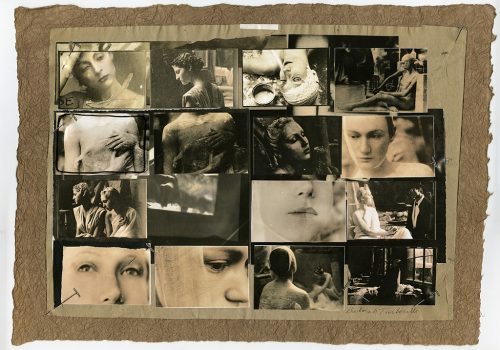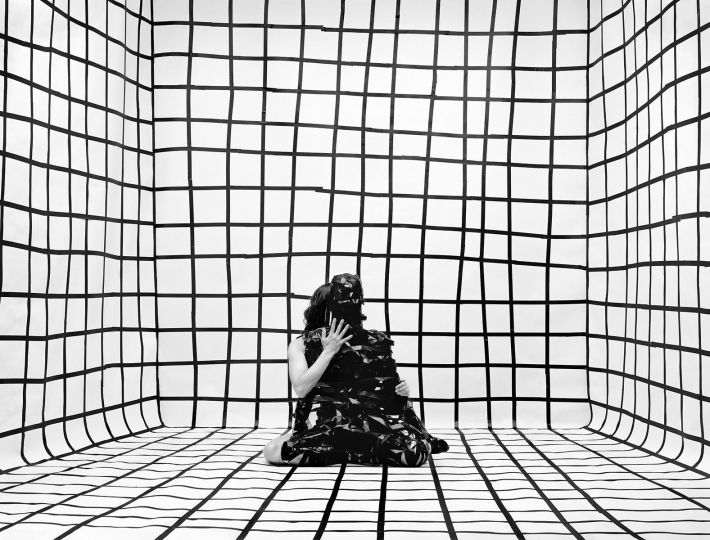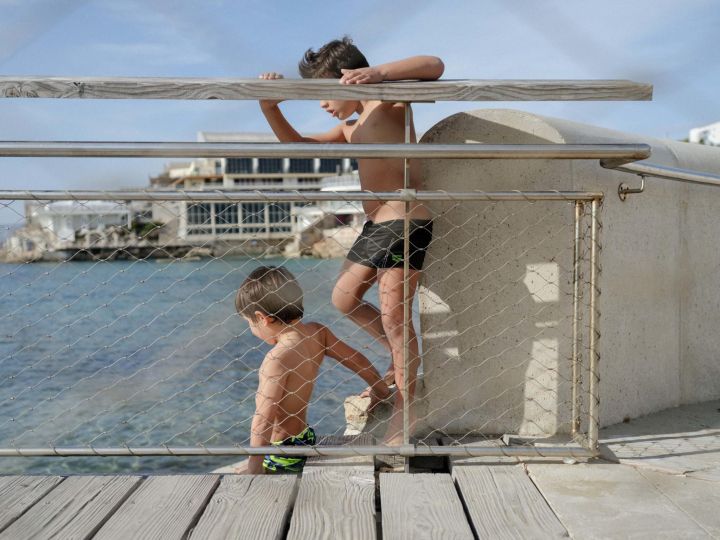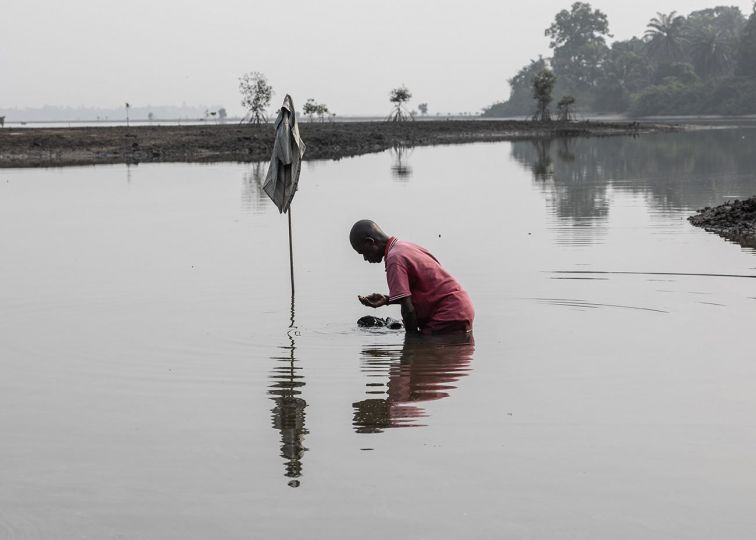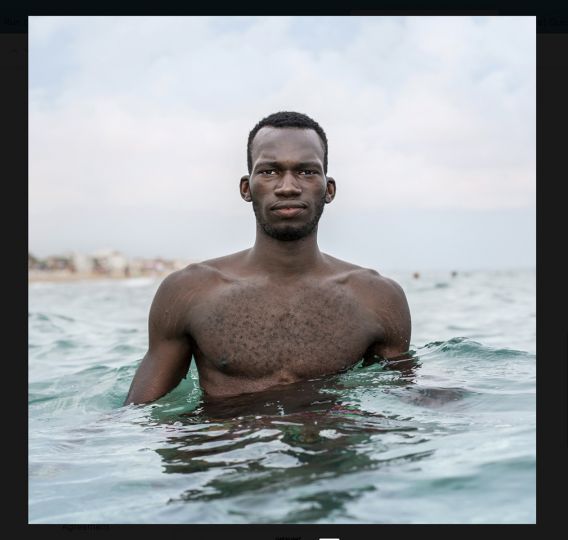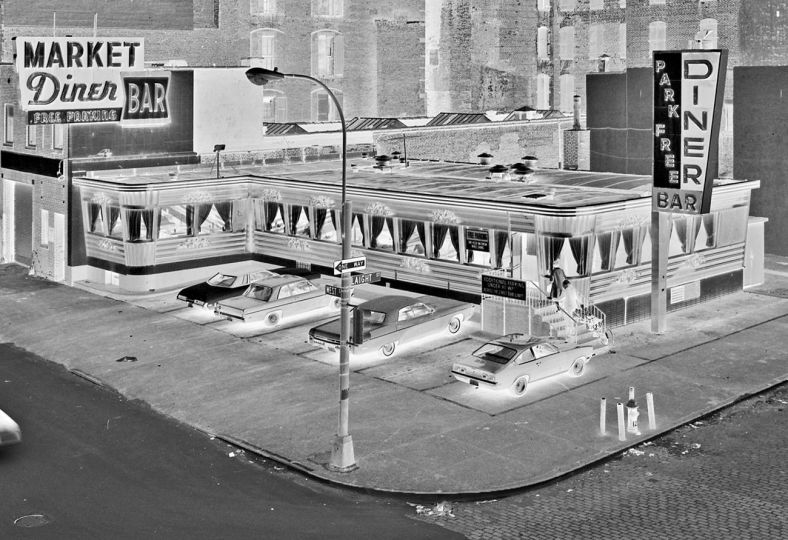An exhibition of collages by Deborah Turbeville (American, 1932-2013) is on view at Deborah Bell Photographs through Saturday, June 29. This is the first exhibition devoted solely to Turbeville’s collages.
Turbeville is known for her iconoclastic fashion photographs, elaborate tableaux that depict brooding, introspective models wearing haute-couture clothing and posed in barren, desolate settings. Her pictures were widely published in the editorial pages of Vogue, Harper’s Bazaar, Essence, Nova, Mirabella, The New York Times Magazine, and other major publications.
Advertising clients included Comme des Garçons, Ralph Lauren, Valentino and Calvin Klein; and department stores such as Barney’s, Bloomingdale’s and Saks Fifth Avenue.
A former fashion editor for the The Ladies Home Journal, Harper’s Bazaar and Mademoiselle, Turbeville began taking photographs in the 1960s; however, she had no formal training until 1966 when she enrolled in a six-month photography workshop given by Richard Avedon and the art director Marvin Israel. As Turbeville told The New York Times in 1981, “If it hadn’t been for the two of them, I wouldn’t have taken my photography seriously.” Another mentor was Gösta Peterson, whose free-form approach with animated models greatly inspired Turbeville. She also acknowledged the influence of European films of the 1970s, especially those by Bertolucci and Antonioni.
Turbeville began to create books and exhibitions of her prints and collages in the late 1970s. Her first book, Wallflower, was designed by Marvin Israel and published in 1978. Shortly before this, in the spring of 1977, Turbeville was beginning to exhibit her photographs at Sonnabend Gallery in New York. Israel’s considerable influence on Turbeville’s work, and his layout of her pictures in Wallflower, led Turbeville to proclaim, in later years, “Marvin Israel made me.” He encouraged her to use tape and t-pins in assembling her collages, and to treat her prints as anything but precious. She re-assembled contact sheets and used masking tape around the 35mm frames to identify her preferred exposures. Sometimes two pictures are layered or overlapping in a collage, as if it were a work in progress. Turbeville’s acute attention to the mood of a place, the nuance of facial expression and body language, and her innovative cropping of the image she saw through her camera, are all accentuated in the serial imagery of her collages.
Turbeville was not only prolific and internationally published as an image-maker, but was also a maverick printmaker. She used unusual papers, experimented with toning and alternative processes, and intentionally scratched her negatives, striving to imbue her prints and collages with a sense of decay and timelessness.
Variants of some of the collages reproduced in Wallflower will be on view in the exhibition, such as those utilizing images from “stories” now referred to as Dummy Factory (1974), Glass House (1978), and Women in the Woods (1978). Of special note is a collage of rare photographs that Turbeville took in Kenya in 1992 while on assignment for Mirabella with the renowned fashion editor Jade Hobson, in which Turbeville’s pictures of Hobson are juxtaposed with portraits of the wildlife photographer Carol Cawthra Hopcraft and scenes of the people, animals, and daily life on Hopcraft’s ranch.
Turbeville describes her philosophy in the introduction to Wallflower:
Through a series of vignettes in stills, I wish to use the medium of photography to explain a group of rather eccentric people – sometimes one or two, sometimes many – placed in settings that help describe them. These people perform like a repertory company, often reappearing in different roles. … My pictures walk a tightrope. They never know. … I am one of the very few “enfants terrible” still claiming to take fashion photography. I am not a fashion photographer, I am not a photo-journalist, I am not a portraitist.
Throughout her career Turbeville traveled widely and concentrated on many themes in addition to fashion. In addition to Wallflower, the many books she published from her oeuvre include Women on Women (1979); Unseen Versailles (1982); Les amoureuses du temps passé (1987); Newport Remembered with Louis Auchincloss (1994); Studio St. Petersburg (1997); Le passé imparfait (2009); Casa No Name (2009); and Deborah Turbeville: The Fashion Pictures (2011). Turbeville’s photographs have been acquired by institutions worldwide including The Museum of Modern Art, New York; Whitney Museum of American Art, New York; Addison Gallery of American Art, Phillips Academy, Andover, MA; and the Victoria and Albert Museum, London.
This exhibition is presented in association with Staley-Wise Gallery, New York.
DEBORAH TURBEVILLE: Collages
May 3 – June 29, 2019
DEBORAH BELL PHOTOGRAPHS
16 East 71st Street, Suite 1D
New York, New York 10021
www.deborahbellphotographs.com

